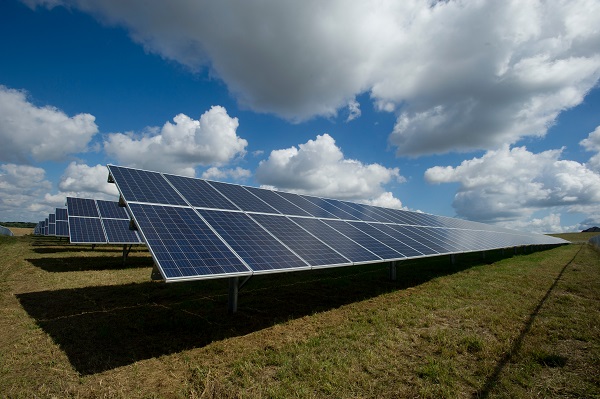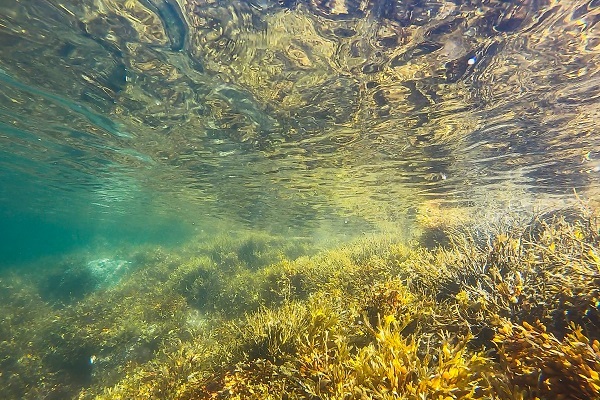Microbe Found in Volcanic Hot Spring Could Help Capture CO2 from the Atmosphere
Microbe found in volcanic hot springs could help tackle the climate crisis by rapidly absorbing carbon dioxide, according to a team of scientists. The cyanobacterium, discovered near the Italian island of Vulcano, can turn CO2 into biomass faster than any other known cyanobacteria. The microbe sinks in water, which could aid collection and potentially be used to create bioplastics. The team, which has also explored hot springs in Colorado, is building a database pairing DNA sequence with banked samples of the bacteria, which could offer a solution to removing greenhouse gases from the atmosphere.
Energy Vault’s Giant Brick Batteries Could Power Thousands of Homes

Startup Energy Vault is testing gravity storage technology at two sites under construction in China and Texas, using bricks filled with tightly compressed dirt hoisted up a massive building by a solar-powered or wind-powered elevator. The brick-filled building is a giant battery that stores energy with gravity instead of chemistry. The two facilities in tall buildings will have storage capacities of 100 megawatt-hours and 36MWh, respectively. Solar panels and wind turbines generate power more cheaply than coal and natural gas plants. Still, a mismatch between power production and power usage needs to be resolved with storage.
Nature’s tools for cleaning up polluted waterways

Nature has provided various natural tools to clean polluted waterways, such as bivalves, aquatic plants, and fish. These natural methods filter out excess nutrients and contaminants from the water, stabilize shorelines and reduce erosion. These methods can help to reduce nutrient levels, prevent harmful algal blooms, stabilize shorelines, and improve water quality. Natural solutions offer sustainable and eco-friendly alternatives to costly and energy-intensive human-made technologies. They can promote biodiversity, enhance ecosystem services, and provide long-term solutions for sustainable water management.
Renewable Energy Surpasses Fossil Fuels in EU Winter for the First Time

According to energy think tank Ember, renewable energy sources generated more energy than fossil fuels for the first time ever in the European Union (EU) during the winter of 2022-2023. The 7% decrease in energy demand resulted in a 12% drop in fossil fuel generation, with coal power decreasing by 11% and gas by 13%. Despite concerns that EU countries might turn to coal as the bloc attempted to wean itself off Russian gas, 15 of the 18 EU countries still using coal power reduced their coal generation last winter. Ember’s analysis shows that renewables, such as wind and solar, produced 40% of the EU’s energy, compared to 37% from fossil fuels. The EU needs to further divorce fossil fuels to keep the power supply stable, says Ember analyst Dr Chris Rosslowe.
Hempcrete – A Sustainable Alternative for Insulation

Hempcrete is a biproduct of hemp and lime that has become a sustainable alternative for insulation in homes and buildings. Hemp is an environmentally sustainable plant that grows fast and requires less land than cotton. Hempcrete has thermal, structural, and moisture-handling properties, making it a perfect insulation replacement. Hempitecture is the US leader in hempcrete insulation construction, and they have created Hempcrete and HempWool products for insulation in construction projects. The USA Inflation Reduction Act aims to reduce construction materials costs and promote energy efficiency in buildings. Incentives such as tax credits, rebates, and financial incentives are available for sustainable insulation like hempcrete. The use of sustainable insulation such as hempcrete has the potential to significantly reduce the construction industry’s environmental impact.
Using woodpeckers to promote forest regrowth after wildfires

Black-backed woodpeckers can be used to promote regrowth and biodiversity in forests following wildfires due to their preference for pyro diversity. Scientists have created a tool that uses satellite data and 11 years of surveys to predict where woodpeckers are most likely to be found after a fire, allowing fire management agencies to make informed decisions about salvage logging and protection. The tool can be adapted for other regions and species and is hosted by The Institute for Bird Populations in partnership with the USDA Forest Service. Researchers also found that black-backed woodpeckers tend to nest in edge habitats, and these fledgling birds need live trees to hide from predators. Severe fires with longer burn seasons caused by climate change are becoming the norm, creating conditions many wildlife species have not adapted to.



